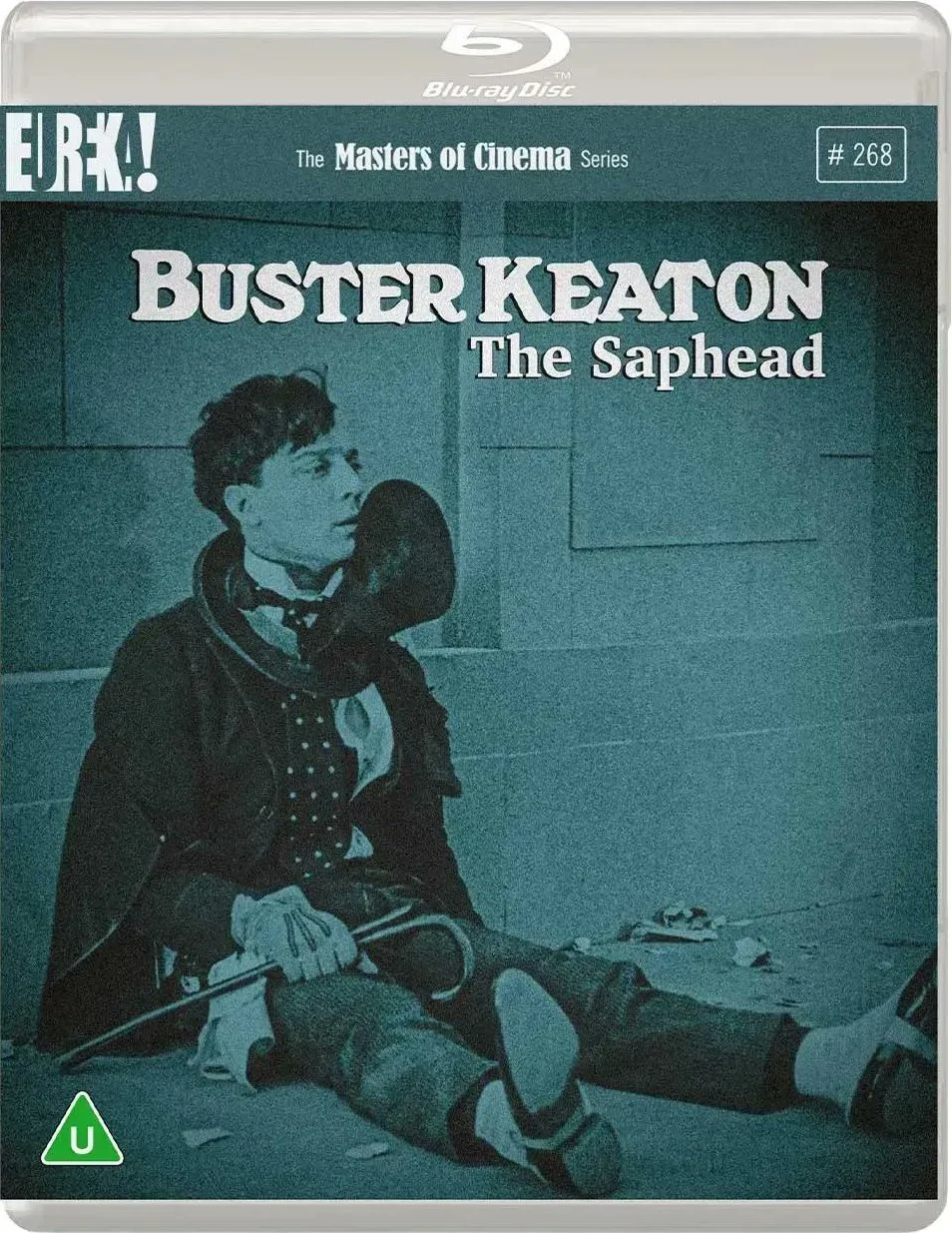Buster Keaton’s The Saphead│Eureka Entertainment
Eureka! The Masters of Cinema Series #268
Courtesy of Eureka Entertainment
by JAMES CAMERON-WILSON
Herbert Blaché and Winchell Smith’s The Saphead which, although it happens to be 102 years old, is actually a remake of a Douglas Fairbanks Western. The latter, called The Lamb (1915), was itself a big-screen adaptation of a hugely popular Broadway play, The New Henrietta, penned by the triumvirate of Bronson Howard, Victor Mapes and Winchell Smith. Following the success of The Lamb, which launched the film career of Douglas Fairbanks, it was decided to remake The Lamb, again with Douglas Fairbanks starring. But at the last minute Fairbanks had a change of heart, and suggested they cast an unknown, to prop up the stage actor William H. Crane, who was to repeat the role he originated on stage. So William H. Crane received top-billing and the London-born Herbert Blaché was hired to co-direct (who, at the time, was married to another filmmaker, Alice Guy, the first woman ever to direct a film). In addition, the screenplay of Herbert Blaché’s movie was co-written by June Mathis, then the highest paid scenarist in Hollywood. Their film, renamed The Saphead and now set entirely in New York, was released in 1920 and went on to inspire a number of future films, including the Preston Sturges-scripted Easy Living in 1937.
The star of The Saphead, whose role was beefed up, was none other than Buster Keaton. But it is important to know, going in, that it is not a Buster Keaton film. Because, while it has many comical elements, it is largely a romantic tragedy, a satire on capitalism, in which Keaton plays the titular Saphead – or Scapegoat. While my dictionary of slang describes a saphead as a “fool”, Keaton’s ill-fated Bertie Van Alstyne is a fool in love. What is remarkable about the film is that this unknown actor – who, until then, had played second fiddle to Roscoe ‘Fatty’ Arbuckle in a number of comic two-reelers – brought a whole new stillness to the medium of cinema. In some sequences he hardly moves at all, which was completely alien to the medium at the time, which favoured vaudevillian buffoonery. The Saphead has been re-mastered from two existing prints, both of which are available on this ground-breaking Masters of Cinema release, along with a whole bunch of superlative bonus material, including a lively and articulate commentary by the American film historian David Kalat, interviews with Buster Keaton himself, and a 29-minute Keaton short, The Scribe, shot on a treacherous Toronto building site in 1966.
Beautifully preserved, The Saphead is an extraordinary time capsule, and although the title character really is a fool, Keaton manages to make us care for him, even when he is banished by his own father, with just a million-dollar cheque to his name – and not a cent more. He is every bit as dim-witted as his privileged namesake, Bertie Wooster, but he is not beyond sacrificing himself for the greater good, even though he’s not entirely sure why. So don’t go expecting a Buster Keaton comedy classic – he didn’t direct this, but see it as a historical gem ahead of its time.
The Saphead is now available on Blu-ray from Eureka Entertainment: https://eurekavideo.co.uk/movie/buster-keaton-the-saphead/
Eureka Entertainment is the leading independent distributor of classic silent/early films in the UK. In 2004, Eureka! established the award winning Masters of Cinema Series, a specially curated director-led Blu-ray and DVD collection of classic and world cinema using the finest available materials for home viewing. In 2014, Eureka! established Eureka! Classics intended to highlight a broader selection of classic and cult cinema, and in 2017, Eureka! established Montage Pictures, a label celebrating ground-breaking and thought-provoking world cinema from new and upcoming directors.

